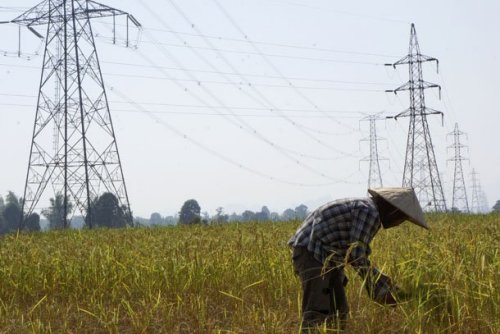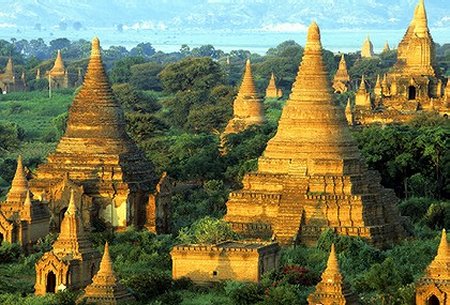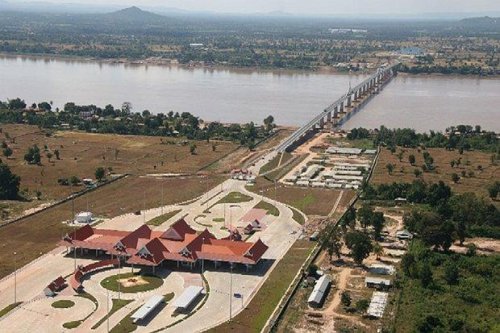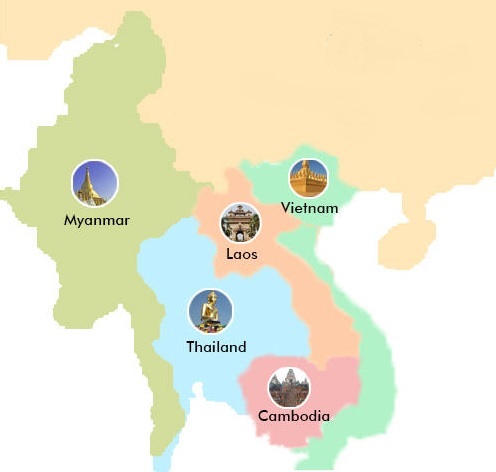Powerhouse Laos Offers Burma a Fix to Electricity Woes
Burma’s chronic lack of electricity to power its economic development could be solved from an unlikely source—underdeveloped Laos.
Laos has just 6.8 million people and is mostly covered in forest, but is almost as big geographically as Italy, which has a population of 60 million. It also has numerous fast-flowing rivers, running from mountains in the north as high as 2,800 meters, and the communist government in Vientiane has drawn up plans to build scores of dams on them to harness their hydroelectric potential.
If all the hydro-dam projects under construction or firmly planned and on the drawing board were built, Laos would have an electricity generating capacity of more than 17,000 megawatts, industry weekly Asia Power Monitor said.
Burma has about 4,500 megawatts of power generating capacity at present.
Laos is already selling large volumes electricity to neighbor Thailand and small quantities to Cambodia and Vietnam. China, which borders Laos to the north, is negotiating for electricity and now, too, Singapore.
The idea of Laos becoming a regional powerhouse was discussed at a meeting in the Lao capital Vientiane of the energy ministers of the Association of Southeast Asian Nations (Asean) at the end of September.
The idea of a transnational electricity grid within the 10-member Asean has been discussed before, but now it has been given impetus with a proposal by Singapore for cooperation on a pilot project to purchase 100 megawatts of electricity from Laos. This would mean Singapore importing the power via Thailand and Malaysia.
The basic framework is already there: Laos is connected to Thailand’s grid and Thailand is linked with Malaysia’s, but there are likely to be political and legal obstacles to navigate, said Asia Power Monitor.
However, the impetus for cross-border power exchanges involving Laos is coming not only from the Vientiane government but also the Asian Development Bank (ADB) and major investors in Thailand and China.
The ADB is keen to promote a regional economic development program that includes China and an electricity-sharing grid.
With some improvements in Burma’s fragmented electricity transmission grid, it would be easier for Laos to hook up with the Burmese system via Thailand than selling power to Singapore, say industry observers.
A meeting of energy officials from Laos, Thailand, Malaysia and Singapore is scheduled for Bangkok in November to work out the practicalities for Singapore.
“The move is aimed at enhancing regional energy security and could serve as a model for the rest of Asia in terms of electricity trading via neighboring countries’ transmission networks,” the Bangkok Post said.
Thailand is already contracted to buy up to 7,000 megawatts from Laos from 2019. Some of this electricity will come from hydropower plants partially funded by the state-owned Electricity Generating Authority of Thailand (EGAT).
Using underpopulated Laos as a surrogate power supplier is both cheaper and hassle-free for Thailand, which has stopped building hydro dams because of fierce public opposition and cost.
“Laos is now selling electricity at a unit price of more than 7 [US] cents per kWh to Thailand and more than 6 cents per kWh to Vietnam and Cambodia, while the unit price in Singapore is about 20 cents,” the Vientiane Times reported in a rare disclosure on pricing revealed in an interview with the Laotian deputy energy minister, Viraphonh Viravong.
But a number of the hydro dams now under construction or planned in Laos are the subject of considerable controversy over their potential impact on the region’s environment, not least fishing stocks on the Mekong River, which feed hundreds of thousands of people in Burma, Laos, Thailand, Cambodia and especially in the Mekong Delta in southern Vietnam.
Both Cambodia and Vietnam have urged Laos to halt work on the 1,280-MW Xayaburi dam on the Mekong, which is partly financed by EGAT.
The US-based NGO International Rivers, which campaigns against many river dams on environmental and social grounds, said its research had uncovered evidence that the Laotian government and its advisers have drawn up proposals for 120 hydropower projects.
Laos is ranked in the United Nations’ least-developed countries list, with a per capita GDP of US$3,100 in 2013. Funding for its dams is coming from a variety of sources, ranging from EGAT to the ADB, which has a policy of promoting clean energy projects to reduce hydrocarbons use, particularly coal-fueled power plants.
More than 97 percent of electricity generation in Laos comes from hydro-dam systems.
“There is an increasing trend of involvement from investment institutions from the Asean region [as well as] Japan, South Korea and China. Funds for regional power interconnectivity initiatives are also likely to be sourced from the ADB-established Asean Infrastructure Fund, China’s Asian Infrastructure Investment Bank [and] the World Bank,” International Rivers’ Tanya Lee told The Irrawaddy.
The ADB drew sharp criticism from environmental and social welfare groups at the end of August for providing a $50 million loan to finance a 290-MW hydro dam on the Nam Ngiep River in central Laos.
This dam is to be built by a consortium including Japan’s Kansai Electric Power Company, EGAT and the Lao Holding State Enterprise.
“Over 90 percent of the power generated will be exported to Thailand. More than 3,000 people, primarily ethnic Hmong and Khmu, will have to involuntarily resettle to make way for the project,” International Rivers alleges.
Asean, which has set an ambitious target of establishing a European Union-style trading bloc starting from the end of 2015, has discussed building a regional high-voltage power transmission system by 2020.
Some other electricity swaps have already taken place or are planned in other parts of Asean.
Malaysia bought power from Singapore to meet a shortfall in 2013, while Malaysia’s Borneo state of Sarawak is preparing to sell electricity to Indonesia’s neighboring province of Kalimantan. And the state power distribution monopolies of Indonesia and Malaysia are cooperating in building an undersea power cable linking Sumatra with southwest peninsular Malaysia.
Source: irrawaddy.org




